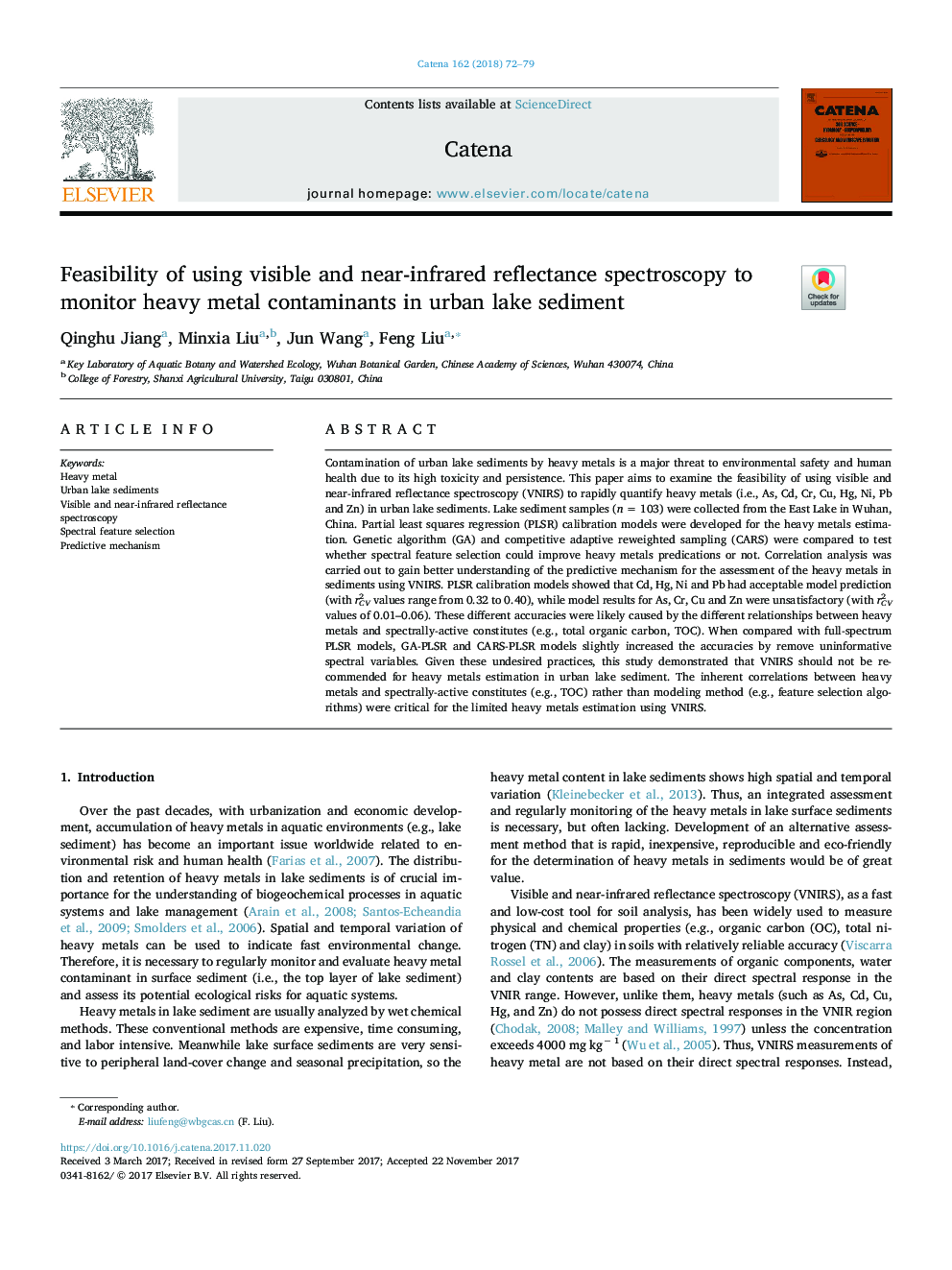| Article ID | Journal | Published Year | Pages | File Type |
|---|---|---|---|---|
| 8893730 | CATENA | 2018 | 8 Pages |
Abstract
Contamination of urban lake sediments by heavy metals is a major threat to environmental safety and human health due to its high toxicity and persistence. This paper aims to examine the feasibility of using visible and near-infrared reflectance spectroscopy (VNIRS) to rapidly quantify heavy metals (i.e., As, Cd, Cr, Cu, Hg, Ni, Pb and Zn) in urban lake sediments. Lake sediment samples (n = 103) were collected from the East Lake in Wuhan, China. Partial least squares regression (PLSR) calibration models were developed for the heavy metals estimation. Genetic algorithm (GA) and competitive adaptive reweighted sampling (CARS) were compared to test whether spectral feature selection could improve heavy metals predications or not. Correlation analysis was carried out to gain better understanding of the predictive mechanism for the assessment of the heavy metals in sediments using VNIRS. PLSR calibration models showed that Cd, Hg, Ni and Pb had acceptable model prediction (with r2CV values range from 0.32 to 0.40), while model results for As, Cr, Cu and Zn were unsatisfactory (with r2CV values of 0.01-0.06). These different accuracies were likely caused by the different relationships between heavy metals and spectrally-active constitutes (e.g., total organic carbon, TOC). When compared with full-spectrum PLSR models, GA-PLSR and CARS-PLSR models slightly increased the accuracies by remove uninformative spectral variables. Given these undesired practices, this study demonstrated that VNIRS should not be recommended for heavy metals estimation in urban lake sediment. The inherent correlations between heavy metals and spectrally-active constitutes (e.g., TOC) rather than modeling method (e.g., feature selection algorithms) were critical for the limited heavy metals estimation using VNIRS.
Keywords
Related Topics
Physical Sciences and Engineering
Earth and Planetary Sciences
Earth-Surface Processes
Authors
Qinghu Jiang, Minxia Liu, Jun Wang, Feng Liu,
